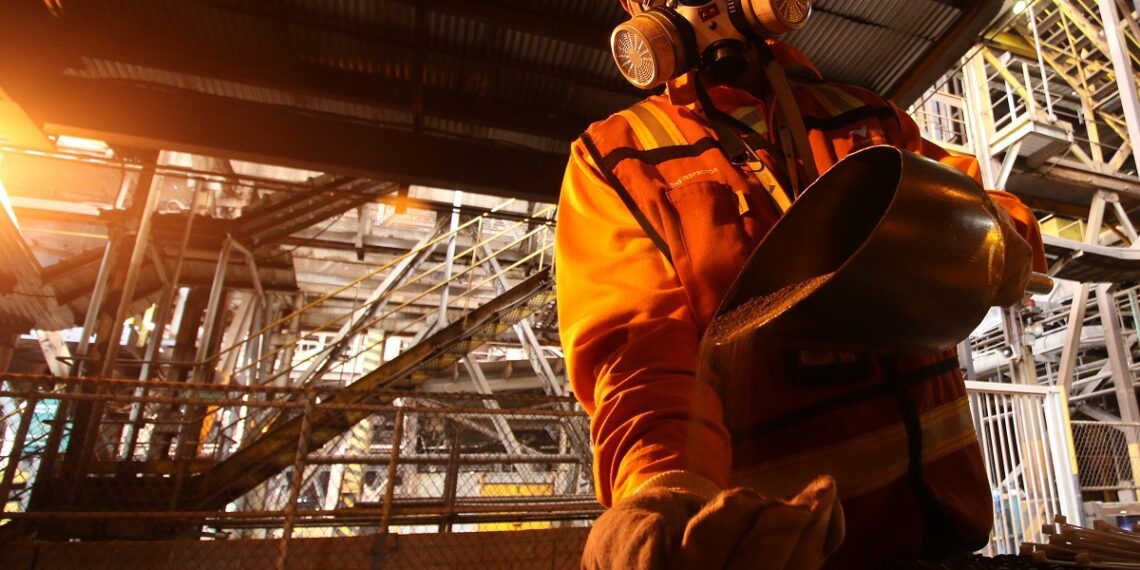Two metals that are becoming increasingly attractive for rechargeable battery and electric vehicle (EV) developers are set to be added to the U.S. Critical Minerals List (CML).
The US Geological Survey (USGS) has proposed adding nickel and zinc into the redrafted critical minerals list, published by the country’s Department of Interior (DOI), which is due to be released in the near future.
The list is regularly updated as the U.S. remains heavily dependent on imports of certain mineral commodities that are vital to the nation’s economic and national security interests. This dependency has the potential to create strategic vulnerabilities arising from adverse foreign actions, pandemics, natural disasters, or other events that can disrupt the supply of critical minerals.
The draft 2021 CML has grown from 35 to 50 since the last iteration in 2018, but that largely reflects the splitting out of rare earth elements and platinum group elements into separate entities.
Four minerals – helium, potash, rhenium, and strontium – have been dropped. The USGS noted that the U.S. is the world’s leading producer and net exporter of helium, while import dependency for the other three is mitigated by “low disruption potential”. Uranium was also dropped after being reclassified as a “mineral fuel”.
The USGS said the addition of nickel and zinc reflects an evolution of the methodology used to determine whether a mineral is critical to the well-being of the U.S. economy and reflects the country’s reliance on imports of the two minerals.
According to the USGS, the U.S. currently relies on refined nickel imports for around half of its annual consumption. The top three suppliers last year were Canada (42%), Norway (10%), and Finland (9%), all deemed “friendly” countries.
The director of the USGS has presented a draft list of 50 mineral commodities proposed for inclusion on the 2021 list of critical minerals. The list is:
Aluminium, antimony, arsenic, barite, beryllium, bismuth, cerium, caesium, chromium, cobalt, dysprosium, erbium, europium, fluorspar, gadolinium, gallium, germanium, graphite, hafnium, holmium, indium, iridium, lanthanum, lithium, lutetium, magnesium, manganese, neodymium, nickel, niobium, palladium, platinum, praseodymium, rhodium, rubidium, ruthenium, samarium, scandium, tantalum, tellurium, terbium, thulium, tin, titanium, tungsten, vanadium, ytterbium, yttrium, zinc, and zirconium.
USGS’ formula
Aside from zinc, all the commodities above the quantitative threshold are on the initial Critical Minerals List.
Of the three commodities that do not meet the quantitative threshold but do meet the single point of failure (SPOF) criteria (beryllium, nickel, and zirconium), only nickel is not on the initial CML. As a result, both zinc and nickel are recommended for addition to the CML.
Although the recommendation for including nickel and zinc on the CML is based on methodological changes, the USGS said there are changes in their supply and demand that are noteworthy.
For example, demand for nickel for use in lithium-ion batteries is currently only a small percentage of its total demand, but that demand is expected to grow markedly as demand for EVs increases in the coming years.
For zinc, global mine and smelter production concentration has increased notably during the past few decades. This change has been driven mainly by increased production in China.
Concurrently, one of two domestic primary zinc smelters halted operations in about 2005 and operational issues and temporary suspension of operations at a secondary zinc smelter (that is, a producer from recycled feedstocks) resulted in a comparatively lower level of secondary production between 2014 and 2019. The smelter reopened in 2020 and is currently ramping up toward its full production rate.
Zinc has also been identified as having growing importance as modern tech metal. New scientific breakthroughs have raised the interest of battery developers in the potential of zinc as a key component and a potential replacement for lithium in energy storage technology.
Meanwhile, the commodities that are currently on the CML but neither meet the quantitative threshold nor have a SPOF are helium, potash, rhenium, and strontium. Notably, potash, strontium, and rhenium have recency-weighted mean supply risk scores of 0.38, 0.36, and 0.36, respectively—just below the quantitative threshold of 0.40.
The Energy Act of 2020 explicitly excluded fuel minerals from the definition of a critical mineral and the Mining and Mineral Policy Act of 1970 formally defined uranium as a mineral fuel, so uranium was not evaluated for inclusion on the 2021 draft list of critical minerals.
Minerals were included on the 2021 draft list of critical minerals based on three evaluations:
(1) A quantitative evaluation wherever sufficient data was available
(2) A semi-quantitative evaluation of whether the supply chain had a SPOF
(3) A qualitative evaluation when other evaluations were not possible
The Energy Act of 2020, Section 7002(c)(4)(A), defined critical minerals as those which:
(i) are essential to the economic or national security of the U.S.
(ii) the supply chain of which is vulnerable to disruption (including restrictions associated with foreign political risk, abrupt demand growth, military conflict, violent unrest, anti-competitive or protectionist behaviours, and other risks through-out the supply chain)
(iii) serve an essential function in the manufacturing of a product (including energy, technology, defence, currency, agriculture, consumer electronics, and healthcare-related applications), the absence of which would have significant consequences for the economic or national security of the U.S.
The term “critical mineral” does not include:
(i) fuel minerals
(ii) water, ice, or snow
(iii) common varieties of sand, gravel, stone, pumice, cinders, and clay












